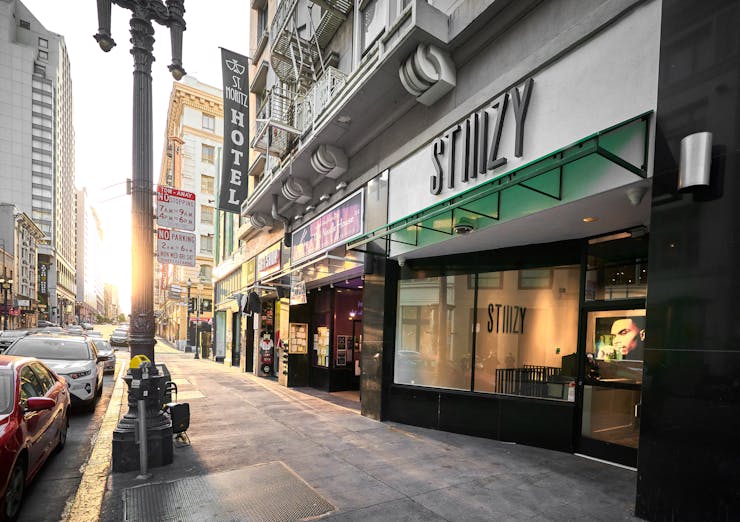The smoke has cleared on the 2020 election, and one thing has come into focus: California’s cannabis multitudes can expect more stores in more corners of the state in the coming months and years than ever before. California is slowly bringing water to its cannabis deserts.
Thirty-two of 38 local marijuana measures passed on Election Day Nov. 3, 2020. The vast majority of the measures allow and tax cannabis businesses locally.
Small, rural, Republican-leaning California towns approved stores, farms, labs, distributors, and kitchens. These holdout towns advanced the work of the once-controversial state legalization initiative, Proposition 64.
California legalization fact box:
- Prop. 64 approved Nov. 8, 2016
- Sales began Jan. 1, 2018
- Number of active storefront licenses today: 715
- Number of active non-storefront (delivery) licenses: 311
- Tax revenue since sales began: $1.45 billion
- Number of jobs, at end of 2019: 39,804
(Sources: Bureau of Cannabis Control; CDTFA; Leafly Jobs Count 2020)
More store optimism
The year’s local vote sweep is another beat in the rhythm of reform—a rhythm so slow you might miss it.
In San Francisco on Oct. 9, the vape brand STIIIZY held a grand opening for its new retail shop in the city’s coveted Union Square downtown shopping district. The store is at 180 O’Farrell Street, between Powell Street and Stockton Street.

K Street Consulting’s Max Mikalonis, a leading statewide lobbyist and licensing expert, is “definitely optimistic” that more retail access is coming to the state. “But I would temper that optimism with the acknowledgment that it’s going to take time for many of these stores to come online.”
California’s lethargic business development pace applies doubly to cannabis. Prop. 64 put cities and counties in the driver’s seat—they can totally ban all cannabis businesses. Most did so at the outset of legalization, creating so-called “cannabis deserts” without any legal outlets for hundreds of miles.
Three years of legal sales convinced skeptics the sky would not fall, said Ellen Komp, deputy director of California NORML. She tracked the local measures in a voter guide for the state’s 482 cities and 58 counties.
“It takes a while for locals to figure out where to zone things. They want to wait and see the process,” she said. “It’s just like the end of alcohol prohibition. There’s still some dry counties in the US.”
Fears of increased crime, teen use, and falling property values did not materialize, said Cannabis Consumer Policy Council Executive Director Nate Bradley.
“It doesn’t have the fear attached to it anymore. No news has been good news,” he said. “It’s like gay marriage. Almost everyone knows someone who uses cannabis. It’s become normalized and bipartisan.”
Some examples:
- Relatively conservative Mt. Shasta voters rejected the efforts of Keep Cannabis Away from Kids Coalition. KCAKC’s failed Measure L had aimed to decrease local cannabis businesses there.
- Conservative Orange County retirement community Laguna Woods narrowly passed a dispensary measure.
- Notorious Highway 101 speed trap King City voted to trap some cannabis tax dollars passing through, as well.
- The full-on cop country of Ventura City and County voted to add stores finally.
- Wine country residents in Ojai have stopped turning their noses up at cannabis dollars, approving Measure G.
- Bay Area bedroom ‘burbs of Tracy, San Bruno, Benicia, Fairfield, and Vacaville will unclenched to legal cannabis jobs and access.
- The forested Gold Country town of Grass Valley added legal jobs to its robust illicit trade.
- The rural city of Weed, CA finally allowed weed!
Four years in—Is Prop. 64 a success?
A criminal justice win
Prop. 64 has been a mix of successes and lessons learned over the past three years since sales began, experts said.
“Were there hiccups? Yes. You couldn’t get it all done at once,” said Bradley at the consumer group. “Prop. 64 was not passed to make a robust industry that was making lots of money. It was passed on social justice reasons. From a voter and consumer perspective, it’s been an all-caps success.”
Prop. 64 deleted most common cannabis crimes. Police can’t use pot’s mere odor to stop young black men, said Bradley, a former officer. Arrests fell 27% to 1,181 in 2019, the lowest since 1954; for a state of 40 million. Prop. 64 kicked off automatic record expungements. Lawmakers added a statewide equity program, and restored compassion programs.


Tax and licensing lessons learned
The need for simpler, lower taxes, and streamlined licensing are the two main lessons learned, Mikalonis said.
On business, onerous federal illicit drug taxes can equal 70-80%. That gets passed onto consumers. Cities further gouge buyers with regressive cannabis sales taxes of 10%, 15%, even 20%. Both levies fuel the street market.
High taxes are the number one consumer complaint of Prop. 64, said Komp. “It’s one big reason the illicit market continues so thoroughly. And it makes it difficult for businesses to make it. I don’t know anybody in cannabis who is making any decent money; in fact the opposite.”
Expert Mikalonis said Prop. 64’s success must be measured in context.
“California was always going to be a tough nut to crack, because we had such a pervasive illicit market, and because we supply cannabis to most of the country.”
After the election, voters’ new job
With the 2020 election in the books, state residents must advocate locally for lower taxes and less bureaucracy, said Bradley. Forty-page applications and two-year waits lock out small businesspeople.
“History is written by the people that show up,” Bradley said. “You can’t just be a keyboard warrior.”
Pro-cannabis voters face organized, funded opposition. Three cities rejected weed—Yountville, Solana Beach, and Jurupa Valley.
“If they really want legal cannabis in their community they need to get active…”
Max Mikalonis, K Street Consulting
Join with other consumers to watch city meeting agendas, comment cogently for local stores, low prices, and lounges, said Komp. California NORML made a local action toolkit to stay engaged.
Represent your values at the community level, said Mikalonis. “If they really want legal cannabis in their community they need to get active and stay active and keep an eye out on what their local city council is doing and what they are proposing,” he said.





